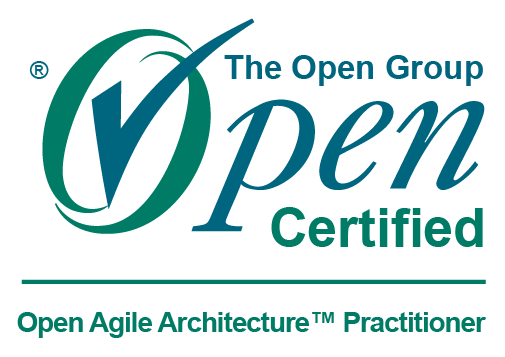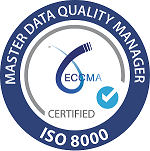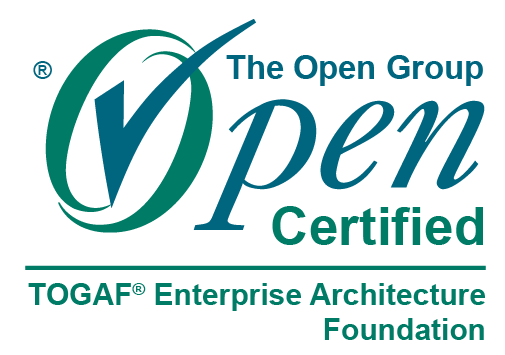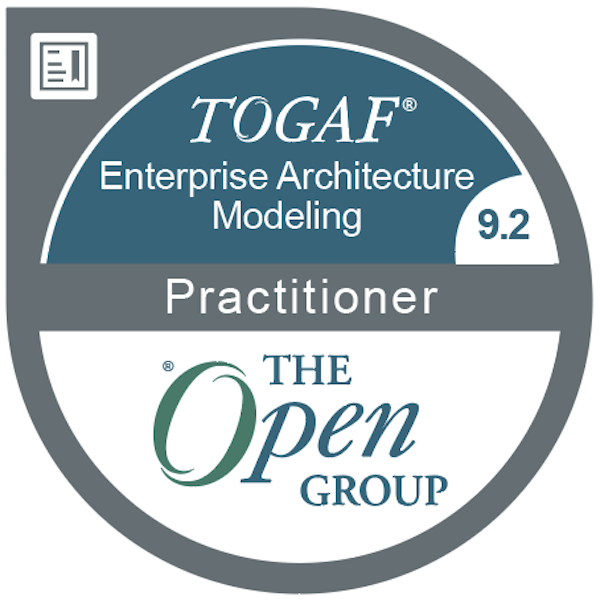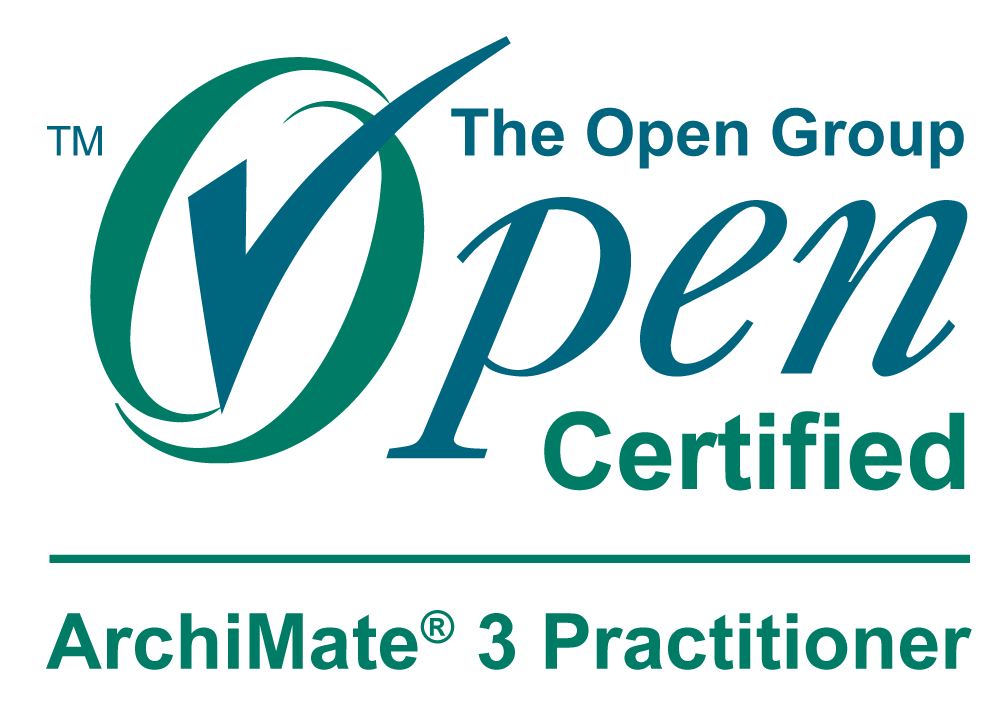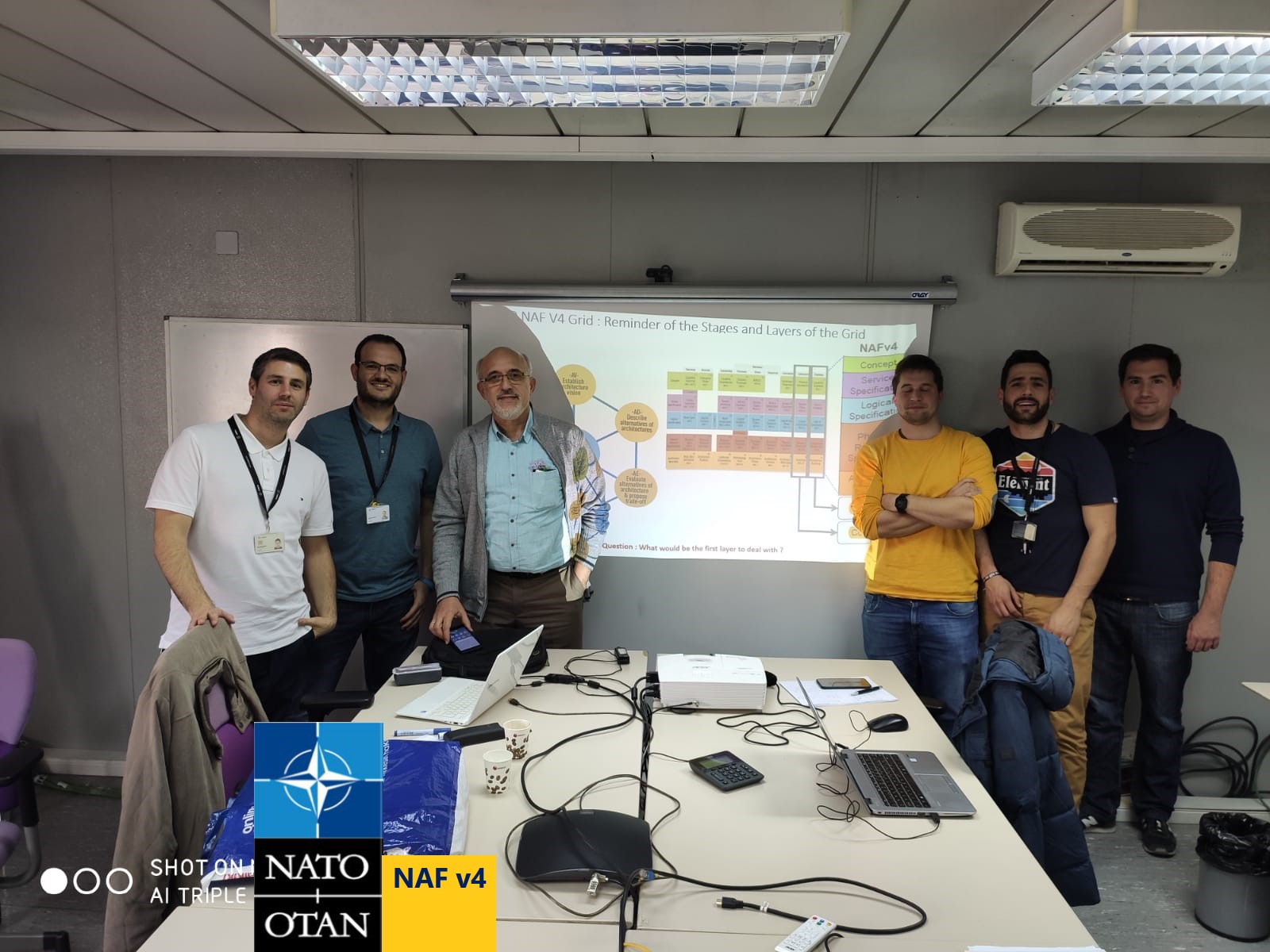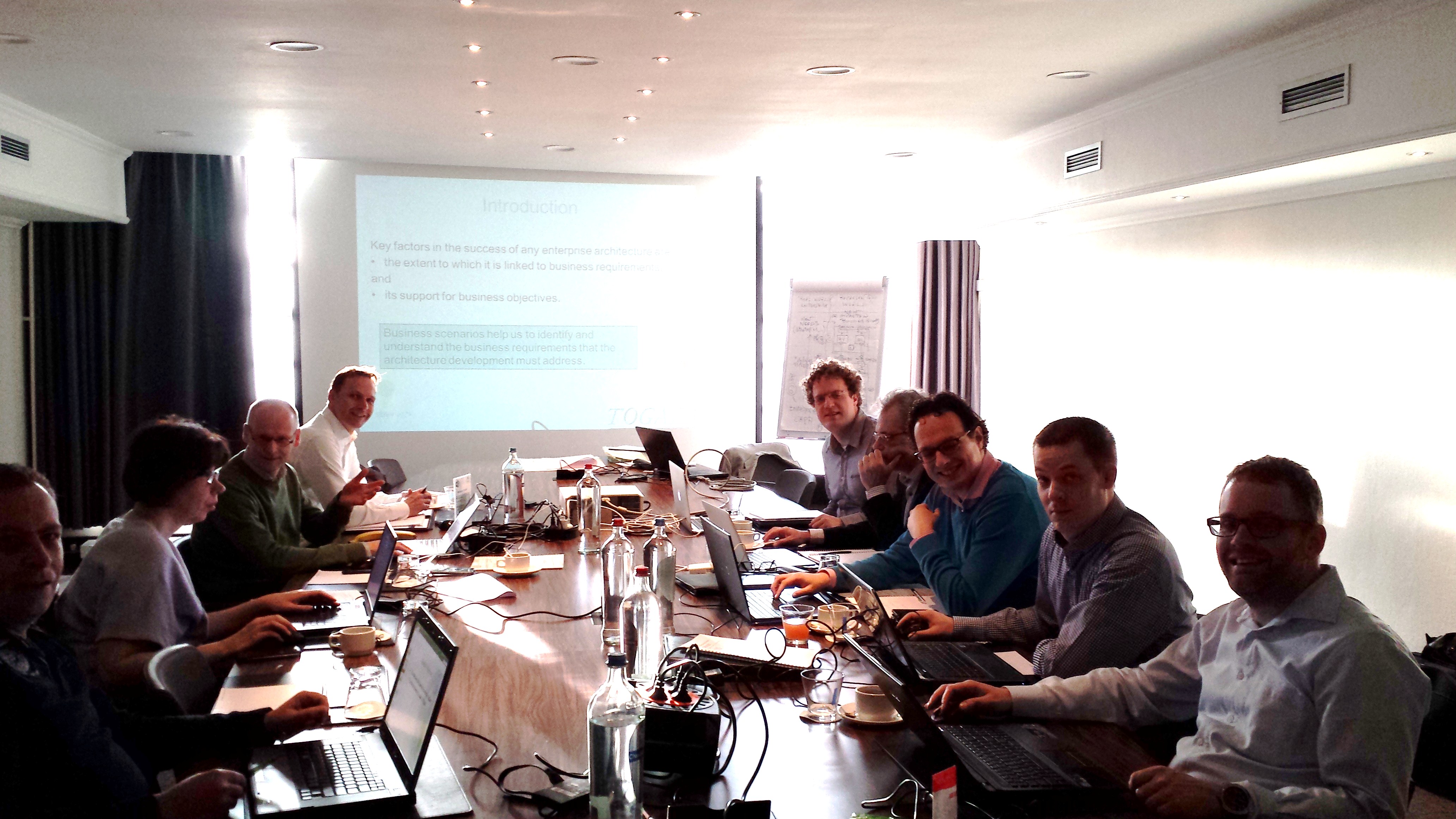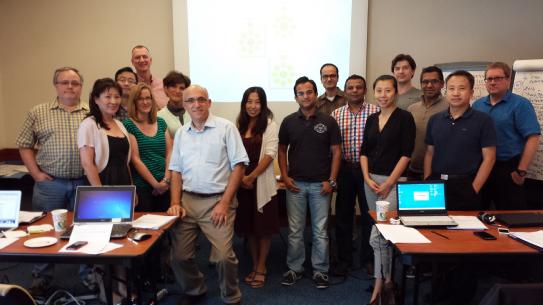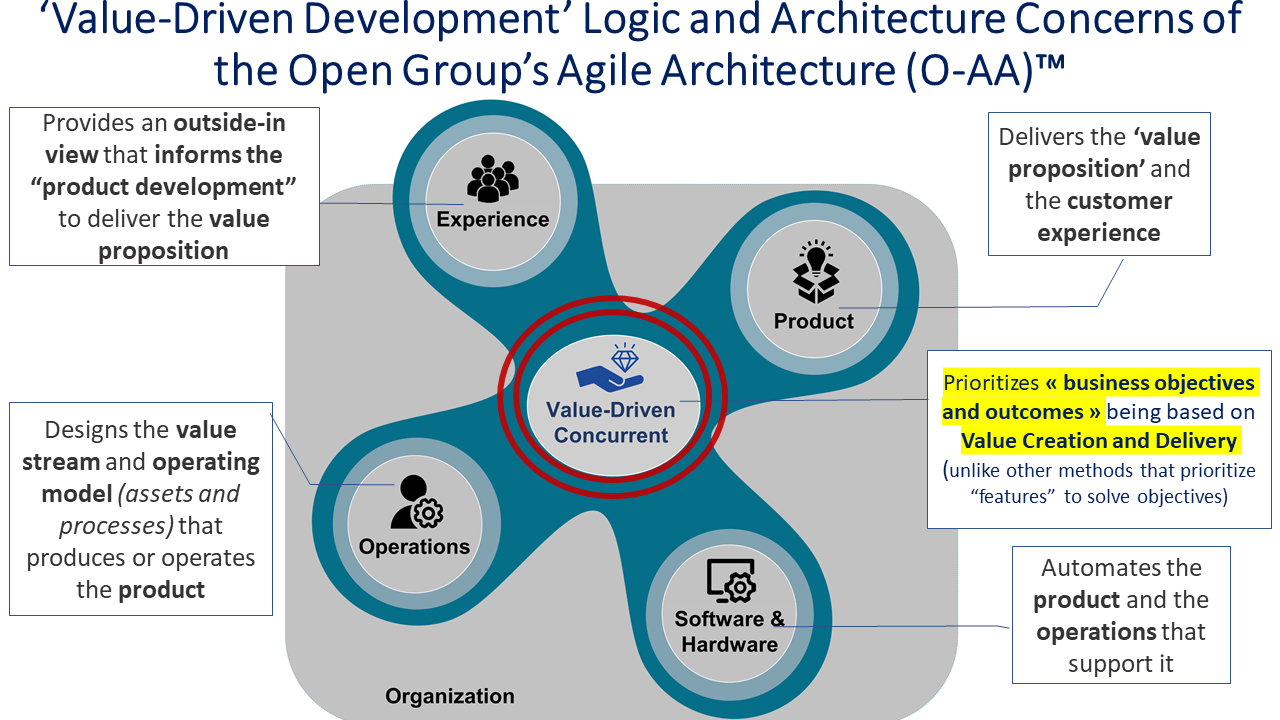Enabling the Agile and Digital Enterprise thru O-AA & TOGAF ADM
Making the Agile Enterprise "Sense the Change" and "Act upon it Rapidly and Decisively"
The Open Group has recently issued the Open Agile Architecture (O-AA) standard that aims to create Value in an Agile way by aligning Products, Services and Operations of the Enterprise to Changing Strategies and Experience Design of Users and Customers.
O-AA (TM) defines the "Dual Transformation" that concerns the Agile and Digital Enterprise by the following statements :
 Read more
Read more ![]()
![]() last updated 26.02.2024
last updated 26.02.2024
NAF v4 : The Unified Architecture Framework (UAF) in the context of the NATO Architecture Framework Version 4
Aligning Human and Physical Resources to the Vision and Changing Landscape

![]() The 'NATO Architecture Framework (NAF v4)' is the new version of the Architecture Framework standard provided by NATO for developing and describing architectures for both military and business sides.
The 'NATO Architecture Framework (NAF v4)' is the new version of the Architecture Framework standard provided by NATO for developing and describing architectures for both military and business sides.
This new version of the NAF is based on the OMG's UAF 1.1 Domain Meta-Model and the Open Group's ArchiMate 3 MetaModels.
We particularly emphasize below on the increasing importance of the alignment of Capabilities, Services, Operations, Human and Physical Resources with the core elements of the OMG's Business Motivation Model (Drivers, Vision, Goals) and trace them through the UAF enabled grid of viewpoints proposed by the NATO NAF v4.
 Read more
Read more ![]() last updated 11.01.2024
last updated 11.01.2024
Enterprise Architectures : From Business Motivation Model (BMM) to SOA through TOGAF's MetaModel
Bridging Goals, Capabilities and Business Processes Toward IT Level SOA Components
 In the light of TOGAF's governance links to align SOA service components with changing strategies, the BMM - SOA bridge offers a Goal-Driven Architecture framework that helps companies to increase
their competitiveness
by synchronizing IT systems with evolutions of their goals and also capitalizing on their business capabilities.
In the light of TOGAF's governance links to align SOA service components with changing strategies, the BMM - SOA bridge offers a Goal-Driven Architecture framework that helps companies to increase
their competitiveness
by synchronizing IT systems with evolutions of their goals and also capitalizing on their business capabilities.
In this context, the framework provides links to establish between your business vision, goals, strategies, tactics as well as business rules and processes according to BMM, then presents bridges from these business specifications toward components of the Service Oriented Architecture (SOA) in order to align IT system components to your goals and directives...
 Read more
Read more ![]() last updated 25.07.2020
last updated 25.07.2020
How to align IT Architectures with Changing Strategies ?
Steps for increasing business agility by aligning IT to changes

IT systems that are developed only using use-case driven and object-oriented methodologies do not provide companies with good levels of agility in face of changes. This is because such methodologies structure systems only focusing on actor/system interactions hiding business requirements.
The resulting systems are difficult to align to change, since IT components are not designed on the basis of "business capabilities" (DNA of the organizations) able to focus on goals and changing requirements that have to be propagated to impact system components in coherence.
Introduction : Why Use Case-Driven Approachs are unable to align IT systems to changes ?
Step 1 - Describe strategies and capabilities on the basis of business goals
Step 2 - Model business processes that realize business capabilities
Step 3 - Discover use cases that invoke services
Step 4 - Draft the backbone of the "Goal-Driven SOA"
Step 5 and 6 - Describe use case and service behaviours that have to be plugged onto the SOA backbone
 Read more
Read more ![]() last updated 25.07.2013
last updated 25.07.2013
Agile Enterprise Architectures : Six Patterns for Aligning IT with Changing Business Objectives
Patterns for succeeding with the Business / IT System Agility using TOGAF's ADM
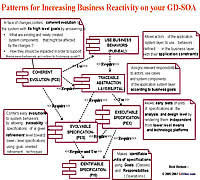
Along the enterprise architecture transformation processes using TOGAF's ADM, in order to avoid agility issues while adapting IT to changes, business and IT structures of the Enterprise Architecture Framework are to be rendered flexible as well as traceable in order to guarantee a coherent evolution in face of changes of the business requirements.
Two groups of patterns may help to achieve these objectives.
![]()
![]() The first group patterns confer flexibility to business and IT service specifications. They ensure identification, traceability and executability of business services.
The first group patterns confer flexibility to business and IT service specifications. They ensure identification, traceability and executability of business services.
![]()
![]() The second group patterns configure services to closing the gap between the business and application layers in order to confer to the overall system a coherent evolution in face of changes.
The second group patterns configure services to closing the gap between the business and application layers in order to confer to the overall system a coherent evolution in face of changes.
![]() last updated 01.02.2015
last updated 01.02.2015
TOGAF 9.1 and Archimate 2 for Aligning SOA with Business Strategies and Capabilities (from EAUG 2013 - Extended Version)
Goal-Driven and Capability-Based Development using Archimate 2.0 within TOGAF ADM phases
This animated presentation is about the Open Group's TOGAF 9.1 and ArchiMate 2.0 standards. It illustrates on a short case study how to use the ArchiMate ® 2.0 throughout TOGAF® 9’ ADM phases in order to align SOA backbone components with changing business strategies and capabilities using Sparx EA.
 Read more
Read more ![]() last updated 30.12.2013
last updated 30.12.2013
Animated : Increasing Business Agility by aligning IT with your Business
An overview on how to align IT with the Business Architecture Views using the OMG's BMM, MDA and SoaML standards
This animated version of the "Goal-Driven Service Oriented Architecture" process illustrates on a short case study useful steps that allow companies to capitalize on their business capabilities and react coherently to changes.
Thanks to its reusable goal-driven business capability components - easily adaptable to changing strategies, the "Goal-Driven SOA" process aims at allowing companies to control execution of their business processes and underlying SOA services then adapt them efficiently to targeted situations...
 Read more
Read more ![]() last updated 12.01.2013
last updated 12.01.2013
Agile Modeling to deal with Changing Requirements
Introduction to the Goal-Driven Agile and Smart Modeling to succeed with Agile Methods
 Since a few years, companies try to customize Agile Methods ( Scrum, XP,...) in order to enhance delivery of their software products on time and budget. One of the serious obstacles they meet using such methods is due to informal and untraceable requirement gathering process that causes extra costs when dealing with changes !
Since a few years, companies try to customize Agile Methods ( Scrum, XP,...) in order to enhance delivery of their software products on time and budget. One of the serious obstacles they meet using such methods is due to informal and untraceable requirement gathering process that causes extra costs when dealing with changes !
Indeed, requirement gathering on the basis of user stories (or use case scenarios) is not sufficient alone to ensure coherent impact analysis in face of changes. This animated short case study presentation illustrates how requirements can be efficiently gathered, structured and assigned to system functions till the software architecture level components in order to better deal with changes.
 Read more
Read more ![]() last updated 16.01.2015
last updated 16.01.2015
Except where otherwise noted, content on this site is
licensed under a Creative Commons Attribution 3.0 License
